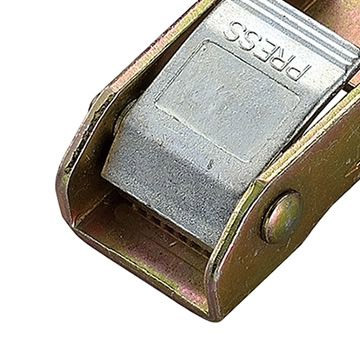Self-Tapping Bolts for Enhanced Fastening Solutions and Improved Structural Integrity
Understanding Self-Screwing Bolts Innovations in Fastening Technology
In modern engineering and construction, the efficiency and reliability of fastening systems are paramount. Among the innovative fastening solutions, self-screwing bolts have emerged as a significant advancement. These bolts embody a blend of convenience and reliability, making them invaluable in various applications. This article delves into the nature of self-screwing bolts, their mechanisms, applications, and benefits.
What are Self-Screwing Bolts?
Self-screwing bolts, often referred to as self-tapping screws, are fasteners that can create their threads while being driven into a material. Unlike traditional bolts that require pre-drilled holes or the use of anchors, self-screwing bolts can cut threads into the substrate, making them an excellent choice for various materials, including metal, wood, and plastic. Their design typically features a sharp point and a threaded shaft that enables them to penetrate materials efficiently.
Mechanism of Action
The mechanism behind self-screwing bolts is relatively straightforward yet ingenious. When the bolt is driven into a workpiece, the cutting edges of the threads carve out a path, forming a thread profile that matches the screw. This action not only secures the bolt in place but also ensures a tight fit within the substrate. The design of the thread and point can vary, depending on the material being fastened and the desired application, which enhances their versatility.
Applications of Self-Screwing Bolts
Self-screwing bolts find applications across various industries due to their simplicity and effectiveness. In the construction sector, they are extensively used for securing drywall and installing roofing materials. In automotive manufacturing, these bolts serve crucial roles in assembling parts due to their ability to save time during the production process.
self screwing bolts

Moreover, the electronics industry utilizes self-screwing bolts in assembling devices where space is often limited. Their ability to provide strong fastening with minimal preparation makes them ideal for repetitive assembly tasks, thereby enhancing productivity.
In the furniture manufacturing industry, self-screwing bolts facilitate easy assembly and disassembly, affording manufacturers the flexibility needed for shipping and storage. By embedding these fasteners into furniture designs, companies can cut down on assembly times for consumers, leading to a better user experience.
Advantages of Self-Screwing Bolts
The benefits of self-screwing bolts extend beyond their application range. One of the main advantages is the reduction in labor costs associated with fastening. Since these bolts eliminate the need for pre-drilling, assembly times are significantly shortened. This labor efficiency can lead to substantial savings in both time and cost for manufacturers and builders.
Furthermore, self-screwing bolts provide a strong and durable connection. The ability of the bolt to form threads in the material ensures a tight fit even in demanding conditions. This connection can resist vibrations and movements, which is particularly important in applications like automotive and aerospace.
Another notable advantage is the reduced risk of material damage. Traditional methods of fastening can lead to splitting or cracking, especially in softer materials like wood. The design of self-screwing bolts minimizes this risk, making them suitable for a broader range of substrates.
Conclusion
In summary, self-screwing bolts represent an innovative solution to fastening challenges in various industries. Their ability to create threads while being installed simplifies the assembly process, reduces labor costs, and enhances flexibility in design and application. As industries continue to demand greater efficiency and reliability, the role of self-screwing bolts is likely to expand, paving the way for advances in fastening technology. Embracing these innovative solutions can lead to significant improvements in productivity and overall project outcomes, making self-screwing bolts an essential component in the toolbox of modern engineering and construction professionals.
-
Weatherproof Plastic Expansion Anchors for OutdoorNewsJun.06,2025
-
Sustainability in the Supply Chain: Eco-Friendly TEK Screws ProductionNewsJun.06,2025
-
Load-Bearing Capacity of External Insulation FixingsNewsJun.06,2025
-
Double Head Bolts: Enhancing Efficiency in Industrial MachineryNewsJun.06,2025
-
Corrosion Resistance in Chipboard Screws: Coatings for Wholesale DurabilityNewsJun.06,2025
-
Butterfly Toggle Bolts : Enhancing Structural ResilienceNewsJun.06,2025
